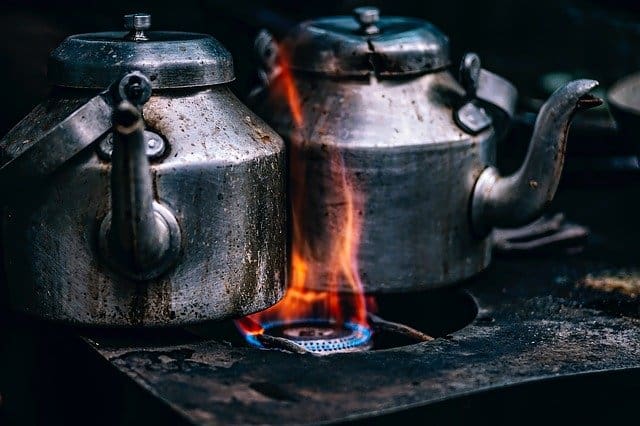Differences Between Boiling And Evaporation

Although both evaporation and boiling represent change of state from liquid to vapour, there are still differences between boiling and evaporation either in physics or chemistry.
Considering heating a solid, we think of molecules, atoms or ions having definite equilibrium positions, but vibrating about these positions with Kinetic energy that depends on temperature. As we come to the melting point, the energy supplied does not increase with the kinetic energy, and hence the temperature of the solid, but instead is used to overcome the forces between the atoms
This means that the potential energy of the molecules is increased. The increase in the potential energy is the latent heat of fusion of the solid. As heating continues, the atoms can now move about relatively free in the liquid phase, but they are still close enough to experience interatomic forces, and still have potential energy associated with these forces as well as K.E corresponding to the temperature.
One of the assumptions of K.E is that for an ideal gas, there are no interatomic forces, this implies latent heat of vaporization is greater than latent heat of fusion.
Read: Heat capacity
Explanation
Boiling occur at a particular temperature for a given atmospheric pressure. Also, it occurs when the saturated vapour pressure of the liquid involved equals the external pressure. Boiling point increases with external or atmospheric pressure.
Evaporation increases with an increase in the temperature of the surrounding. Molecules are lost from the surface of a liquid at any temperature by the process of evaporation
Substance can exist in any three state of matter namely solid, liquid or gas. The state in which a substance exists depends on the temperature. Solid when heated change to liquid and when the liquid is further heated, it changes to gas.
Note: during change of state temperature remain constant.
The heat supplied to a solid (e. g ice) during change of state is used to overcome the attractive forces that hold the solid molecule together. It does not make the substance warmer and so it is not detected by a thermometer. The heat is used mainly in making the solid molecule move freely as in a liquid. Also the heats supply to a liquid at its boiling point is used to overcome the attractive forces that hold the liquid molecule together and push back the surrounding air molecule.
Differences
| Evaporation | Boiling |
| It can take place at any temperature | It takes place at a fixed temperature for a given pressure of the surrounding |
| It takes place at the surface of the liquid | It occurs in the body of the liquid |
| Evaporation is affected by surface area | Boiling is not affected by surface area |
